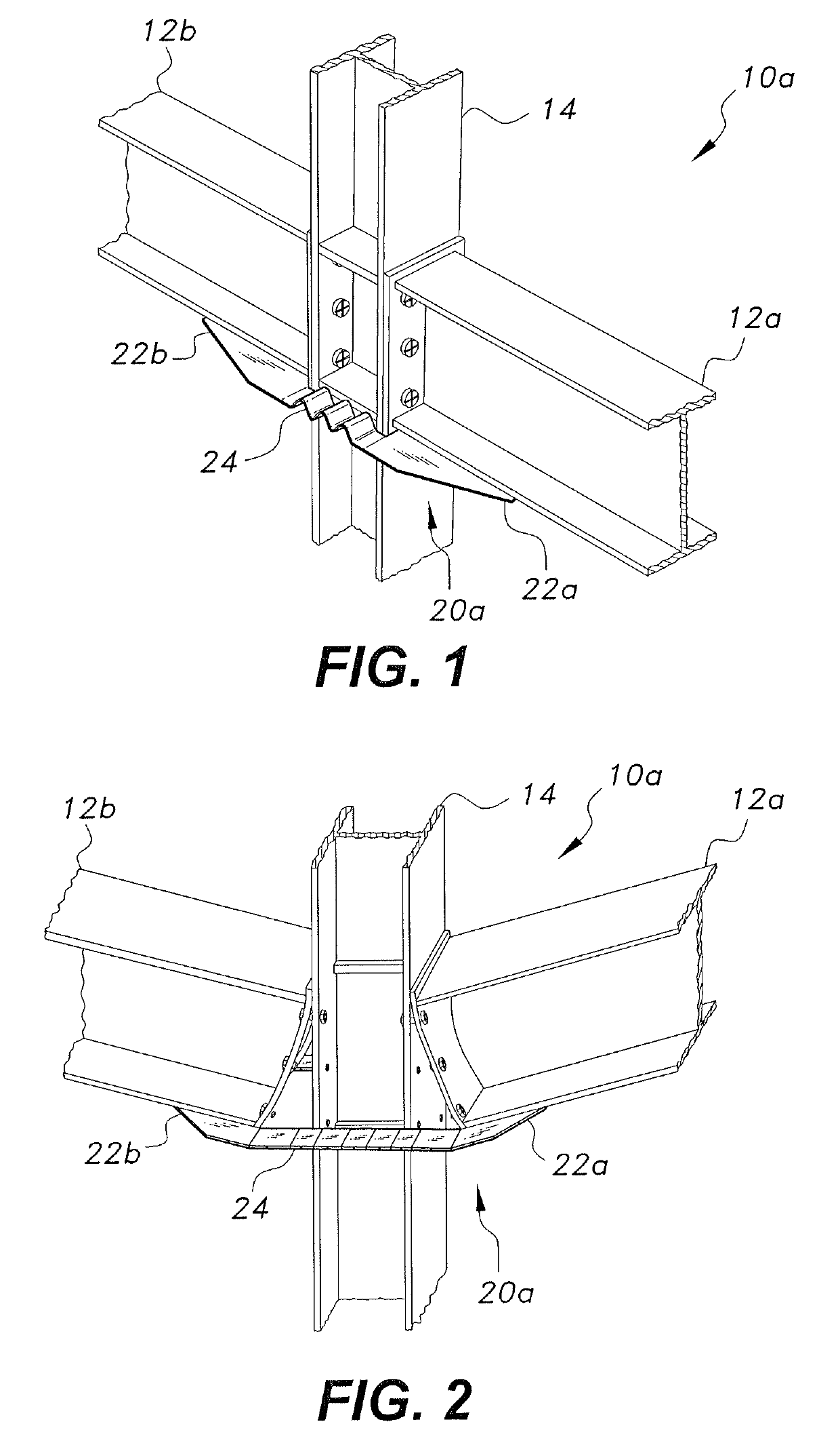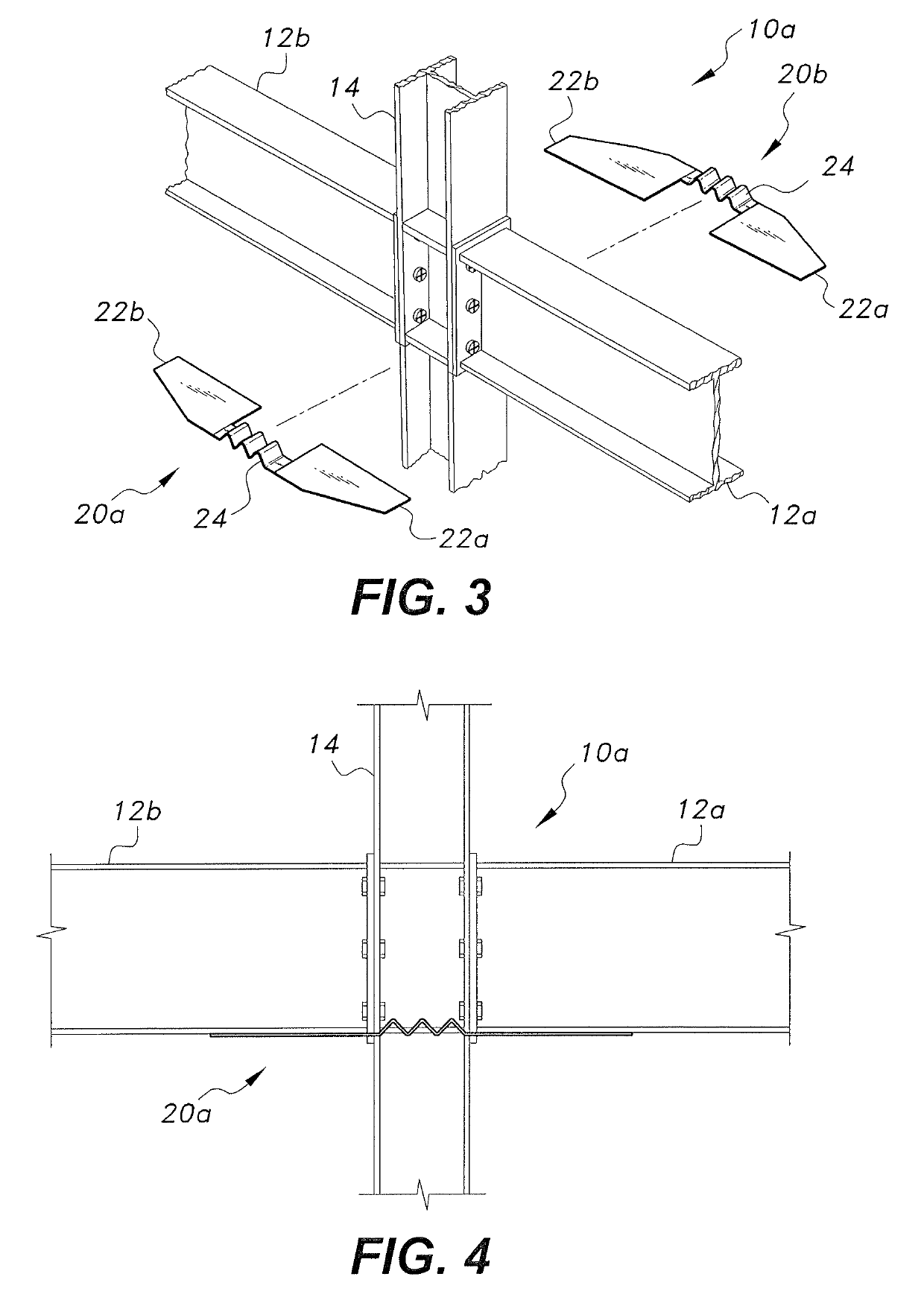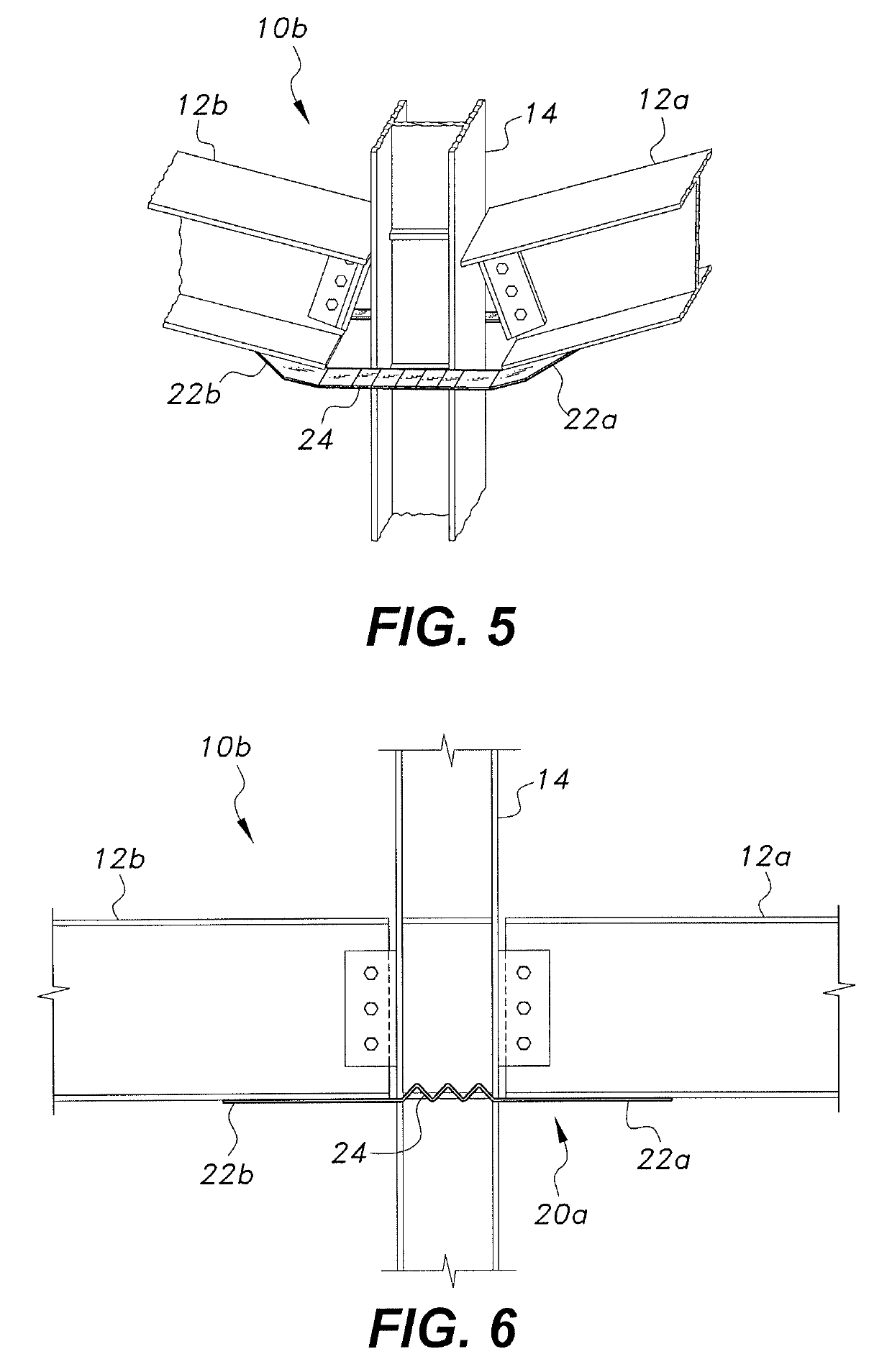Strengthening system for beam-column connection in steel frame buildings to resist progressive collapse
a technology of steel frame buildings and strengthening systems, which is applied in the direction of building components, building types, constructions, etc., can solve the problems of missing the currently available beam-column connection, unable to resist progressive collapse of steel frame buildings, and many steel buildings have witnessed progressive collapse. , to achieve the effect of reducing the risk of falling
- Summary
- Abstract
- Description
- Claims
- Application Information
AI Technical Summary
Benefits of technology
Problems solved by technology
Method used
Image
Examples
first embodiment
[0038]FIGS. 1-4 depict the strengthening system for beam-column connection in steel frame buildings to resist progressive collapse for a semi-rigid connection. As seen in FIGS. 1-4, two rippled plates 20a, 20b are secured across a bottom of a semi-rigid beam-column connection 10a, or beam-column joint. The rippled plates' 20 first resistive measure is impulse dissipation by spreading the large initial force caused by the beam dropping down to a lower force over a longer period of time. This is achieved through straightening of the ripples 24 on the plates 20a, 20b. The force from the plates 20a, 20b counters a separating force at the lower edge of the beams 12a, 12b. Once the ripples 24 are straightened and a large amount of the force on the joint 10a has been dispersed, the tensile strength of the straightened plate will counteract the remaining force, thus retaining the connection between the beams 12a, 12b and the column 14. The beams 12a, 12b will then be able to support the col...
fifth embodiment
[0052]FIGS. 17-20 depict the strengthening system for beam-column connection in steel frame buildings to resist progressive collapse. As seen in FIGS. 17-21, this embodiment is directed at an internal joint 10c connecting four perpendicular beams. Four rippled plates 50a, 50b, 50c, 50d are used to reinforce the joint, and each beam is connected to the two adjacent beams through the rippled plates. For example, beam 12a is connected to beams 12b and 12d by plates 50b and 50a, respectively. Each plate 50a, 50b, 50c, 50d includes a horizontally oriented rippled section 54 and two mounting portions 52a, 52b. The mounting portions 52a, 52b may be oriented at 45° from the rippled section 54 to align with the beams 12, as shown in FIG. 20. Each mounting portion 52a, 52b is connected to the lower flange of two adjacent, perpendicular beams at a location immediately next to the adjacent plate. FIG. 19 shows the plates 50a-d connected to the joint 10c from a top view. The edges of the four pl...
PUM
 Login to View More
Login to View More Abstract
Description
Claims
Application Information
 Login to View More
Login to View More - R&D
- Intellectual Property
- Life Sciences
- Materials
- Tech Scout
- Unparalleled Data Quality
- Higher Quality Content
- 60% Fewer Hallucinations
Browse by: Latest US Patents, China's latest patents, Technical Efficacy Thesaurus, Application Domain, Technology Topic, Popular Technical Reports.
© 2025 PatSnap. All rights reserved.Legal|Privacy policy|Modern Slavery Act Transparency Statement|Sitemap|About US| Contact US: help@patsnap.com



